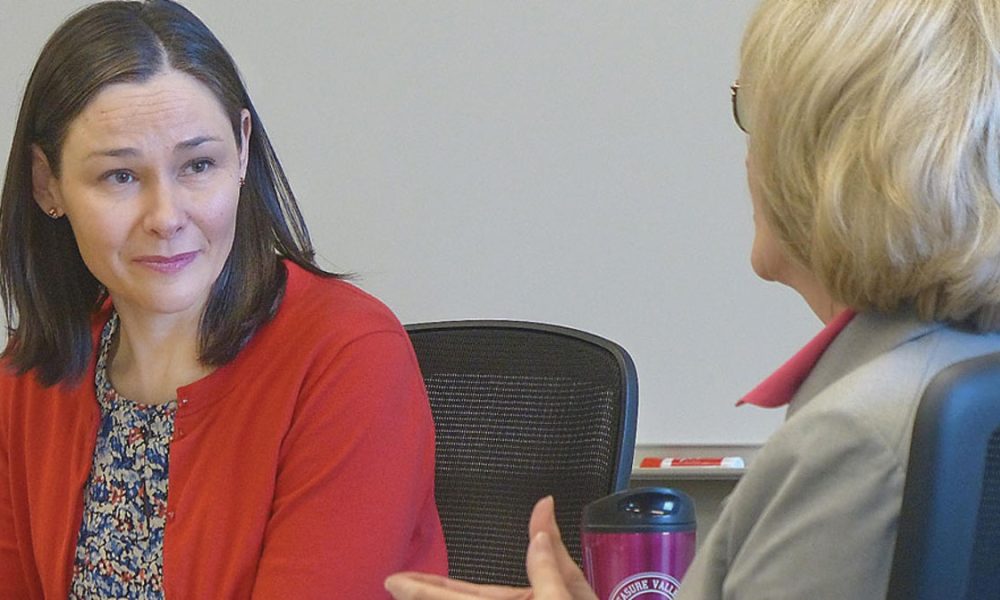 Shawna Peterson, the chair of the Eastern Oregon Border Economic Development Board, listens to board member Dana Young during a meeting earlier this year. (Enterprise file photo)
Shawna Peterson, the chair of the Eastern Oregon Border Economic Development Board, listens to board member Dana Young during a meeting earlier this year. (Enterprise file photo)
Malheur County has long felt itself throttled in competing with its crossriver neighbors in Idaho. Everything from taxation to wages to training has been cited as reasons the county seems to trail the successes obvious just across the border. Fixing that imbalance has seldom got beyond the mantra: “Do something!”
Now, we have a chance to “do something” but in a way that solves problems, earns political respect, and gives the community hope. Fortunately, those leading this new effort well understand that we have to act now with more than platitudes and hand wringing.
We’re talking about the Eastern Oregon Border Economic Development Board. Created by the 2017 Legislature under the guidance of now-state Sen. Cliff Bentz, the board of local people is figuring out what rules, regulations and laws stand between Malheur County and the kind of growth and economic strength seen in nearby Idaho communities. They have refined “do something” into an articulate, clear mission.
The priority is to be ready with reforms to sell to the 2019 Legislature. This is going to take something more compelling than “woe is us” or “get off our backs.” And it’s no time to play that tired fiddle of the urban-rural divide in Oregon. Rather, a Legislature dominated by west side politicians will only be persuaded to help us here if the case is strong.
That means any pitches to change rules or laws to ease up on Malheur County need to be pretty specific. The border board, to its credit, is sharply aware of that, no doubt tutored by Bentz. The board realizes it has to first articulate a need, then identify what stands in the way, and then propose a x.
The board is focused on one key target for its first time before legislators: rural housing. The board has decided that getting more people to live in Malheur County is needed to get employers the help they need. And one way to do that is housing. The board thinks allowing homes to go up on farmland with restrictive zoning could make sense – if it’s farmland that really isn’t suitable to grow or feed anything.
No one should underestimate how tough that may be to sell on the west side. But that challenge affords opportunity. Legislators will be watching closely to see how Malheur County makes use of the special chance it has been given with the border board. Future fixes to law or regulation and even future funding probably depend mightily on this first performance. Legislators should be left feeling they were indeed wise to carve out the Malheur County exception by creating the board.
There isn’t much time for this first act. The board itself has set next month as its self-imposed deadline to craft a legislative solution. That’s where its focus should be in coming weeks. The board also is pushing itself to set up the rules for using $5 million in state money given to the board for regional economic work. For some in the community, this might be seen as a honey pot or “easy money” for a pet project. That can’t be, and the community should put no pressure on the board to create rules that would raise eyebrows in Salem.
This isn’t easy work. Those seven people serving – voluntarily – on the board have been diligent, focused and responsible. They know what’s at stake for Malheur County in getting this right. The community should support that and in no manner jeopardize the progress that is now possible and will, in fact, get something done.
–LZ




